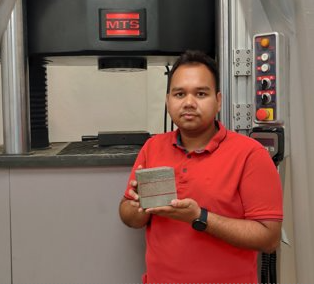
“The prestigious ACRP scholarship will help us to conduct practical research on this newer EMAS with multi-layer-cellular concrete system that will enhance safety and save lives during aircraft overrun.”
According to Mr. Alam (September 9, 2022)
Airport Cooperative Research Program (ACRP) Graduate Research Awards Program (https://www.trb.org/ACRP/GraduateResearchAwards.aspx) recently provided funding in the amount of $12,000 to Arafat Alam for his research project titled, Experimental and Numerical Study of Multi-layer Cellular Concrete for EMAS Application. Arafat is one of the eight 2022–2023 recipients of the ACRP Graduate Research Awards.
The Transportation Research Board’s Airport Cooperative Research Program (ACRP) has announced the winners of its annual Graduate Research Awards. The prestigious awards focus on applied research on airport and related aviation system issues to help the public sector continue to improve the quality, reliability, safety, and security of the U.S. civil aviation system.
Engineered Material Arresting System (EMAS) is a crushable material placed at the end of a runway to mitigate damage and injuries resulting from an aircraft overrun at airports. The tires of the aircraft sink into the lightweight, crushable material, and the aircraft is decelerated as it rolls through the material. Compared to the single-aircraft design that is currently used, a composite EMAS design with depth-varying characteristics (changing density and strength to become harder at deeper levels) of EMAS that is capable of effectively arresting different sizes of aircraft is desirable. The overall goal of the study is to develop a multi-layer cellular-concrete (MLCC) EMAS with a tailored control design that can be used in different types and sizes of airports. The study is expected to justify that materials can be tailor-designed and capable of arresting different aircraft. The success of the study will lead to a safer and more efficient EMAS. The study is expected to provide fundamental understanding of the physical and mechanical properties and energy absorption of the developed material and system. The integration of experimental and simulation of both material and EMAS performance will justify the application of MLCC in EMAS.
More details at: https://www.trb.org/ACRP/GraduateResearchAwards.aspx